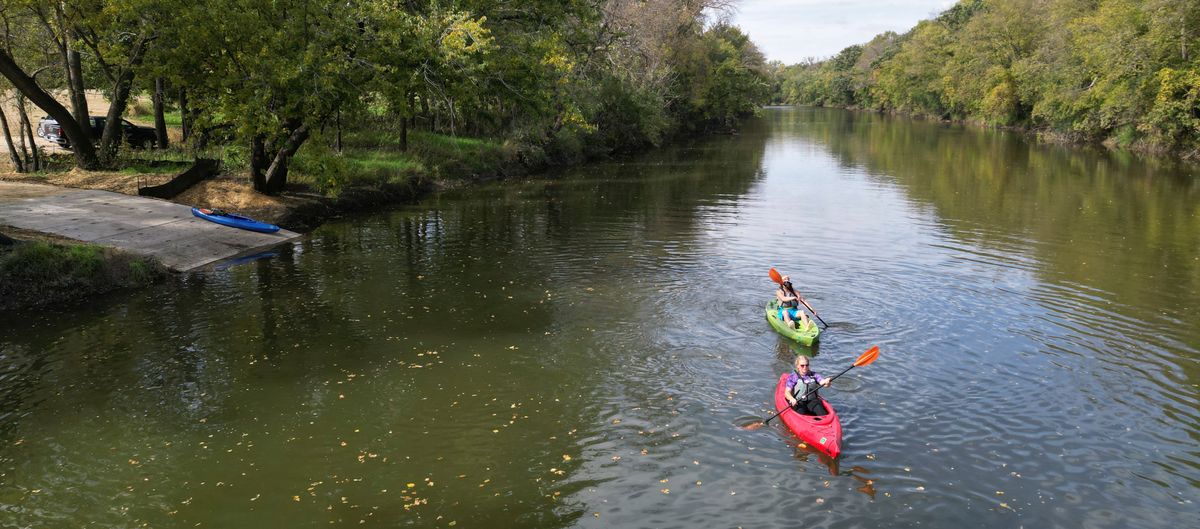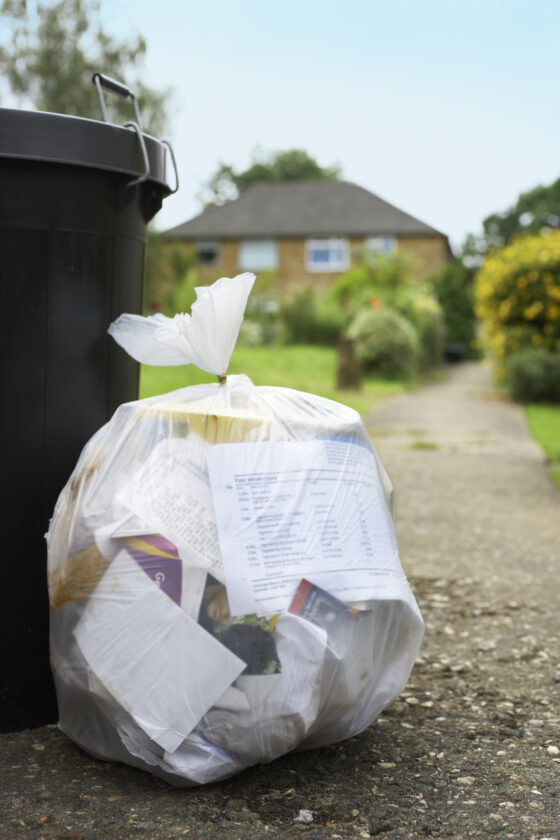A View on the Future of Water Resources: A Q&A with Dustin Atchison – Jacobs

Report on Integrated Water Resource Management and Sustainable Development Goals
Introduction: Aligning Water Management with Global Sustainability
The management of water, a critical shared natural resource, has become increasingly complex due to global challenges. Jacobs is addressing these complexities by aligning its water resource solutions with the United Nations Sustainable Development Goals (SDGs). The organization’s strategy focuses on integrated water stewardship to combat environmental pressures and resource demands, thereby delivering resilient, cross-sector solutions. This approach aims to protect assets, support healthy ecosystems, and foster thriving communities, directly contributing to several key SDGs.
Core Water Management Challenges and SDG Alignment
A convergence of factors presents significant challenges to global water security. The organization’s work directly confronts these issues in alignment with specific SDGs.
SDG 6: Clean Water and Sanitation & SDG 13: Climate Action
The primary challenges represent a direct threat to the achievement of SDG 6 and are exacerbated by climate change, linking them to SDG 13.
- Water Scarcity: Growing demand from populations and industry requires a delicate balance with the needs of nature, central to Target 6.4 (water-use efficiency).
- Climate-Driven Hazards: Changing weather patterns are increasing the frequency and intensity of floods, droughts, and rising sea levels, impacting water availability and safety (SDG 13).
- Urbanization Pressures: Rapid urban growth strains existing water infrastructure, challenging the provision of universal access to clean water and sanitation (Target 6.1 and 6.2).
- Equitable Access: There is an increased focus on ensuring water resource management benefits all communities, particularly those historically underserved, which is a core principle of SDG 6.
Strategic Solutions for Sustainable and Resilient Infrastructure
Jacobs employs a multi-faceted approach that integrates technology, cross-sector expertise, and community-centric design to build resilient infrastructure, supporting SDG 9 (Industry, Innovation, and Infrastructure) and SDG 11 (Sustainable Cities and Communities).
SDG 9: Technology and Digital Transformation
Innovation is central to developing smarter and more efficient water management systems.
- Digital Platforms: Technologies like the Flood Platform are applied to enhance predictive capabilities and risk management.
- Artificial Intelligence (AI) and Machine Learning: These tools are integrated to support faster, data-driven decision-making for complex water systems.
- Cross-Sector Integration: Expertise from multiple sectors is combined to deliver holistic solutions that recognize the interconnectedness of water with other critical systems.
SDG 11: Community-Centered and Resilient Urban Design
The focus extends beyond technical services to create community value and enhance urban resilience.
- Multi-Benefit Projects: Designs incorporate features that serve multiple purposes, such as stormwater parks that provide flood protection (Target 11.5), improve water quality (SDG 6), and create recreational spaces for community well-being (Target 11.7).
- Workforce Development: Projects are designed to include initiatives that support local employment and economic growth, contributing to SDG 8 (Decent Work and Economic Growth).
Opportunities in Future Water Resource Management
Current challenges present opportunities to innovate in planning, funding, and managing water systems, fostering collaboration as outlined in SDG 17 (Partnerships for the Goals).
Integrated Strategies for Multiple SDGs
A shift towards integrated strategies enables the development of more resilient systems that achieve multiple sustainability objectives.
- Nexus Approach: Recognizing the vital connections between water, land, food, and energy (SDG 2, SDG 7, SDG 15) allows for holistic planning.
- Nature-Based Solutions: Combining traditional infrastructure with nature-based solutions supports biodiversity and ecosystem health, aligning with SDG 14 (Life Below Water) and SDG 15 (Life on Land).
- Smart Systems: Digital enhancements, such as AI-powered flood systems, improve responsiveness to changing environmental conditions.
SDG 17: Partnerships and Innovative Financing
New models for funding and collaboration are emerging to implement comprehensive solutions.
- Collaborative Delivery Models: Partnerships between public and private entities are becoming more common.
- Blended Financing: Mechanisms such as community-based public-private partnerships and environmental impact bonds are utilized to fund projects that support responsible investment and net-zero water stewardship.
Case Studies in Integrated Water Management
Two projects exemplify the application of these integrated principles to solve large-scale water challenges while delivering community and environmental benefits.
Greater Manchester Integrated Catchment Management Plan
This project is highlighted for its integrated approach to solving water challenges at a regional scale, addressing issues from flood risk to water quality in a holistic manner that supports SDG 6, SDG 11, and SDG 13.
City of New Orleans Lakeview Hydraulics and Hydrology Study
This study aimed to reduce chronic flooding by integrating blue, green, and grey infrastructure. The solution was developed through close collaboration with local stakeholders, ensuring the final plan addressed technical needs while prioritizing community benefits and resilience, directly contributing to the goals of SDG 11 and SDG 13.
1. SDGs Addressed in the Article
The article discusses complex water management challenges and solutions, directly connecting to several Sustainable Development Goals that focus on water, climate, infrastructure, and community well-being.
-
SDG 6: Clean Water and Sanitation
This is the most central SDG. The article revolves around managing water resources, addressing issues like “increased water shortages, growing demand, water pollution,” and implementing “integrated water stewardship.”
-
SDG 9: Industry, Innovation, and Infrastructure
The article highlights the need for “resilient, cross-sector solutions” and developing advanced infrastructure. It emphasizes “leveraging cutting-edge technology” like AI, machine learning, and the “Flood Platform” to create smarter and more resilient water systems.
-
SDG 11: Sustainable Cities and Communities
The focus on “urbanization,” “flood risk management,” and making communities resilient connects directly to this goal. The article stresses creating solutions that benefit communities, such as “stormwater parks that double as recreational spaces” and ensuring management benefits “all communities, including those historically underserved.”
-
SDG 13: Climate Action
The article explicitly states the goal is to “improve resilience to climate change.” It addresses challenges driven by “changing weather patterns,” including “more frequent and intense events, such as flooding, droughts and rising sea levels.”
-
SDG 17: Partnerships for the Goals
The text mentions the importance of collaboration to overcome funding and implementation challenges. It points to “collaborative delivery models and blended public-private financing, such as community-based public-private partnerships and environmental impact bonds.”
2. Specific Targets Identified
Based on the article’s content, several specific SDG targets can be identified:
-
Target 6.4: By 2030, substantially increase water-use efficiency across all sectors and ensure sustainable withdrawals and supply of freshwater to address water scarcity.
The article directly addresses this by discussing the challenge of “increased water shortages, growing demand” and “water scarcity,” and the work to provide “water scarcity solutions.”
-
Target 6.5: By 2030, implement integrated water resources management at all levels, including through transboundary cooperation as appropriate.
This is a core theme, with the article highlighting “integrated water stewardship,” “integrated catchment management,” and the “Greater Manchester Integrated Catchment Management Plan” as a key project example.
-
Target 9.1: Develop quality, reliable, sustainable and resilient infrastructure… to support economic development and human well-being.
The article discusses building “resilient systems that combine traditional infrastructure with nature-based solutions and digital enhancements” and creating infrastructure that goes “beyond essential services” to “enhance community value.”
-
Target 11.5: By 2030, significantly reduce the number of deaths and the number of people affected and substantially decrease the direct economic losses relative to global gross domestic product caused by disasters, including water-related disasters.
The focus on “flood risk management,” “coastal resilience,” and projects like the “City of New Orleans Lakeview Hydraulics and Hydrology study” which aimed to “reduce chronic flooding in a meaningful way,” directly aligns with this target.
-
Target 13.1: Strengthen resilience and adaptive capacity to climate-related hazards and natural disasters in all countries.
The entire premise of the work described is to “improve resilience to climate change” and manage “natural hazards” exacerbated by “changing weather patterns,” such as flooding and droughts.
-
Target 17.17: Encourage and promote effective public, public-private and civil society partnerships, building on the experience and resourcing strategies of partnerships.
The article points to a “shift in funding landscapes” leading to creative solutions like “collaborative delivery models,” “blended public-private financing,” and “community-based public-private partnerships.”
3. Indicators Mentioned or Implied
The article implies several ways to measure progress towards the identified targets, even if it does not name the official SDG indicators:
-
Implementation of Integrated Water Management Plans
The article cites the “Greater Manchester Integrated Catchment Management Plan” as a key project. The existence and scale of such plans serve as a direct indicator of progress towards Target 6.5. This aligns with official indicator 6.5.1 (Degree of integrated water resources management implementation).
-
Reduction in Flooding and Improvement of Water Quality
The goals of projects in New Orleans (“reduce chronic flooding”) and the function of “stormwater parks” (“improve water quality, provide flood protection”) are measurable outcomes. These serve as practical indicators for Targets 11.5 and 6.3.
-
Adoption of New Technologies and Resilient Infrastructure
The use of “digital transformation,” “AI and machine learning,” and “smart flood systems” are indicators of progress in building resilient infrastructure (Target 9.1) and strengthening adaptive capacity to climate change (Target 13.1).
-
Creation of Multi-Benefit Community Spaces
The development of “stormwater parks that double as recreational spaces” is a tangible indicator of creating valuable public spaces while addressing water management, relevant to Target 11.7.
-
Formation of Public-Private Partnerships
The article explicitly mentions the use of “community-based public-private partnerships and environmental impact bonds.” The number and value of these partnerships can be used as an indicator for progress on Target 17.17.
4. Summary Table of SDGs, Targets, and Indicators
| SDGs | Targets | Indicators (as identified in the article) |
|---|---|---|
| SDG 6: Clean Water and Sanitation | 6.4: Address water scarcity. 6.5: Implement integrated water resources management. |
Implementation of “water scarcity solutions” and integrated plans like the “Greater Manchester Integrated Catchment Management Plan.” |
| SDG 9: Industry, Innovation, and Infrastructure | 9.1: Develop quality, reliable, sustainable and resilient infrastructure. | Adoption of “cutting-edge technology” like AI, machine learning, and “smart flood systems” in infrastructure projects. |
| SDG 11: Sustainable Cities and Communities | 11.5: Reduce the impact of water-related disasters. | Implementation of projects designed to “reduce chronic flooding” and provide “flood risk management.” |
| SDG 13: Climate Action | 13.1: Strengthen resilience and adaptive capacity to climate-related hazards. | Development of solutions that “improve resilience to climate change” and manage hazards like “flooding, droughts and rising sea levels.” |
| SDG 17: Partnerships for the Goals | 17.17: Encourage and promote effective public-private partnerships. | Use of “collaborative delivery models” and “community-based public-private partnerships.” |
Source: jacobs.com

What is Your Reaction?
 Like
0
Like
0
 Dislike
0
Dislike
0
 Love
0
Love
0
 Funny
0
Funny
0
 Angry
0
Angry
0
 Sad
0
Sad
0
 Wow
0
Wow
0













































































